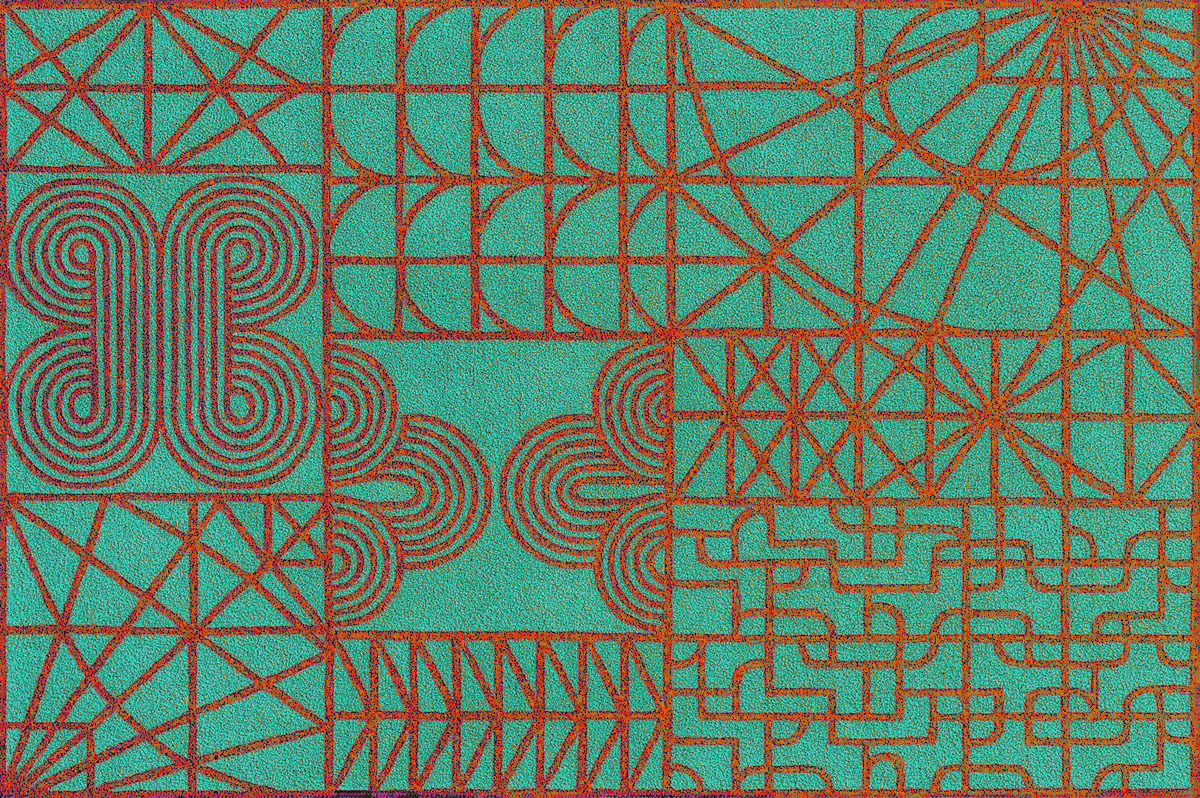This tufted wool rug unfolds like an atlas of the mind, where the language of geometry becomes a cartography of abstraction. It recalls the illuminated parchment of early navigational charts, the kind unfurled by Renaissance geographers and explorers as they plotted coastlines both real and imagined. Its grid-like compartments act as territories, each governed by its own system of line and curve, as if representing disparate provinces of knowledge or regions yet to be traversed.
Some panels evoke Ptolemaic celestial diagrams, with concentric arcs suggesting planetary orbits or the swell of ocean currents documented by early maritime chroniclers. Others bear the angular scaffolding of triangulation maps, reminiscent of the instruments used by Gerhard Mercator or Abraham Ortelius to bring order to the unknown. There is a tension between the precision of surveyor’s marks and the more organic, looping motifs, a dialogue between the empirical and the poetic, the measured and the intuited.
The deep lines have the clarity of ink on vellum, standing proud against the sunlit wool, their tactile relief echoing the embossed topographies of antique globes. This interplay of raised and recessed pile makes the rug not just a visual map but a terrain to be navigated underfoot, a literal grounding of the act of exploration.
This rug is condensed cosmography. It invites the viewer, like the explorers of old, to chart pathways across its surface, moving from one patterned dominion to the next, tracing routes that belong as much to imagination as to geography. In its measured divisions and variations, it honours the curiosity that has always driven humanity toward the edges of the known world.
